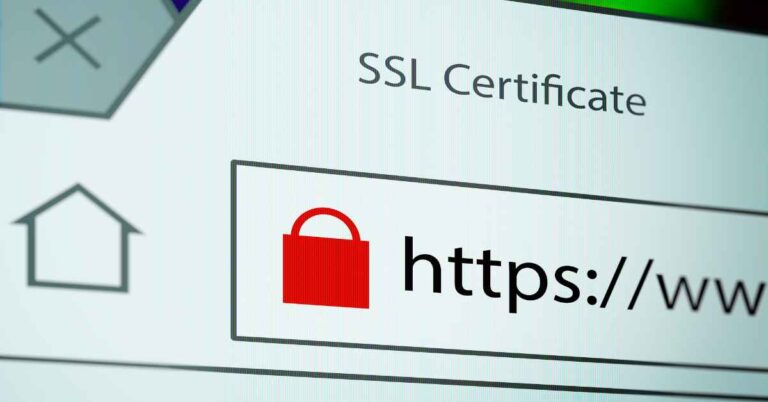How to Start a Blog: A Simple Guide for Beginners
Are you excited to share your thoughts and ideas with the world? Starting a blog is a fantastic way to express yourself and make money online. In this easy-to-understand guide, we’ll explore what a blog is and the basics, ways to make money, and even how to start a blog for free.
What is a Blog?
A blog is a powerful tool where you can write about your interests, experiences, or knowledge on a specific topic. It’s a space to express yourself and connect with others who share your passion. Blogs usually have articles or “posts” that you write and communicate regularly.
Exploring Different Types of Blogs and Niches
Let’s explore the various types of blogs and the numerous niches one can explore.
1. Lifestyle Blogs
Lifestyle blogs encompass various topics, including fashion, beauty, health, travel, home decor, and personal development.
These blogs provide readers with a holistic view of the author’s life, often through personal stories and experiences, making them relatable and engaging. Readers can learn about diverse aspects of a well-rounded lifestyle.
2. Fashion and Beauty Blogs
Fashion blogs delve into the latest trends, fashion tips, outfit ideas, and runway reviews. Beauty blogs explore skincare routines, makeup tutorials, product reviews, and self-care rituals.
Fashion and beauty bloggers are trendsetters who showcase their unique style and offer practical advice, helping readers refine their fashion sense and beauty routines.
3. Travel Blogs
Travel bloggers share their adventures, offering detailed destination guides, travel itineraries, budgeting tips, and captivating stories.
Travel blogs ignite wanderlust in readers, enticing them to explore new places and cultures.
4. Food and Cooking Blogs
Food bloggers share a culinary world of recipes, cooking techniques, restaurant recommendations, and food-related experiences.
Food bloggers often infuse their cultural heritage into recipes, offering a global culinary experience.
5. Personal Development and Self-Help Blogs
These blogs provide insights on personal growth, mental health, self-improvement strategies, and achieving life goals.
Readers turn to these blogs for valuable advice, actionable tips, and motivation to enhance their lives. Personal development bloggers often share their transformational journeys, creating a strong sense of connection.
6. Technology and Gadgets Blogs
Tech bloggers review the latest gadgets, cover industry news, offer tech tips, and provide tutorials on software and hardware.
Tech enthusiasts flock to these blogs for the latest updates and expert insights on cutting-edge technology. The detailed reviews and how-to guides empower readers to make informed tech choices.
7. Parenting and Family Blogs
Parenting bloggers share their experiences, offer parenting tips, discuss family-related challenges, and provide a sense of community.
These blogs offer support and relatable stories for parents navigating the joys and struggles of raising a family. They create a safe space for open discussions on parenting.
8. Fitness and Wellness Blogs
Fitness bloggers share workout routines, nutrition advice, wellness tips and explore various aspects of a healthy lifestyle.
These blogs inspire readers to prioritize their health and fitness goals. They often feature before-and-after success stories, motivating others to embark on their fitness journeys.
9. DIY and Craft Blogs
DIY bloggers offer creative crafting ideas, home improvement projects, and step-by-step tutorials for hands-on enthusiasts.
These blogs empower readers to explore their artistic side and create unique items. DIY bloggers encourage creativity and provide practical guidance for crafting projects.
10. News and Politics Blogs
News and politics bloggers analyze current events, offer commentary, share research, and provide informed opinions on pressing issues.
These blogs contribute to informed discussions and provide diverse perspectives on critical topics, helping readers stay informed and engaged in global affairs.
11. Pet and Animal Blogs
Pet bloggers share pet care tips, heartwarming animal stories, and pet-related product reviews.
Pet lovers find joy and valuable information in these heartwarming blogs. They create a sense of community among pet owners and enthusiasts, fostering a love for animals and responsible pet care.
Each type of blog offers a unique perspective and expertise, catering to readers’ varied interests. Whether seeking advice, inspiration or simply a sense of belonging, blogging has something for everyone. Explore these niches and find a blog that resonates with your passions and curiosity.

How to Start A Blog and Make Money
Starting a blog is easy, and making money from it is possible! Here’s a simple step-by-step guide:
1. Choose a Topic
When you’re thinking about starting a blog, consider what brings a smile when you talk about it. Do you love baking, knitting, painting, tech gadgets, or gardening? That’s the topic you should choose for your blog. By selecting a topic you’re genuinely passionate about, you’ll be able to create content full of excitement and enthusiasm that will resonate with your readers.
2. Select a Platform
Think of this platform as the foundation of your future blog. It’s the technical landscape where you will build your blog. Websites like WordPress, Blogger, or Wix work like your magic wand, which aids in turning your valuable thoughts into words in a digital format. Pick a user-friendly platform and learn basic things like posting blogs, adding images, and managing comments.
3. Choose a Domain Name
Your blog’s domain name is like a GPS location on the vast internet landscape. It’s essential to have a catchy, memorable name that gives an idea about your blog’s content.
If your blog is about technology, consider a name like “TechGuru.com.” Be creative and thoughtful while choosing a domain name that reflects your blog’s theme. Also, check for spelling, grammar, and punctuation errors before finalizing the name.
To learn more about domain names and how to choose one, read our comprehensive article.
4. Design Your Blog
When designing your blog, it’s important to reflect your unique style, just like you decorate your room with your favorite colors, posters, and collectibles. A well-designed blog should be welcoming and easy to navigate while representing your blog’s personality. Make sure to keep it organized and clutter-free, and maintain a consistent style in fonts and colors.
If you want to create a blog site but need technical help, consider hiring a professional WordPress web developer for design assistance.
5. Create Quality Content
Once you have taken care of the technical aspects of setting up your blog, it’s time to focus on what you started it for – writing blog posts that reflect your passion. You can write about your personal experiences, research to share facts or provide tips and tricks related to your topic.
Creating and sharing well-researched, high-quality content consistently is essential to help establish your blog as a reliable and trustworthy resource. This helps attract and retain readers and builds your authority in your niche. By providing valuable insights, unique perspectives, and helpful information, you can earn the trust and respect of your audience.
6. Promote Your Blog
Promoting your blog is like introducing it to the world, akin to artists exhibiting their work. Social media platforms such as Facebook, X formerly Twitter, Instagram, etc., can help you get readers from different parts of the world. You can also practice SEO (Search Engine Optimization) techniques to make your blog more discoverable by search engines.
7. Monetize Your Blog
One of the most exciting parts of blogging is when you start earning money from it. It’s like selling a painting or performing in a concert where you receive applause and appreciation in the form of money.
There are different methods to generate revenue from your blog, and we will explore them next.

How Do Bloggers Get Paid
Many bloggers wonder how they can earn money through their blogs. What are the different ways to monetize their blog? If you’re curious or a new blogger trying to figure out how to make money, let’s take a closer look at the popular methods bloggers use to earn income. By utilizing one or more of these strategies, you can turn your hobby into a profitable business and join the ranks of successful bloggers.
1. Advertising Revenue
Advertising is one of the most common ways blogs generate revenue. Advertisers pay to display their ads on your blog, seeing value in reaching your specific readership. You make money through two models – Cost Per Click (CPC) and Cost Per Impression (CPM).
In the CPC model, you earn money each time a visitor clicks on an ad. With CPM, you make a certain amount per 1,000 views or “impressions” the ad gets. These ads can come via various networks, the most popular being Google AdSense. You sign up, are approved, and receive advertisements that you can strategically place in and around your blog content.
2. Sponsored Content
Sponsored content is another lucrative way to make money in blogging. Brands pay you to write a post related to their products or services. These can be reviews, tutorials, listicles featuring their product, or posts that subtly reference their offerings. Bloggers with a substantial and engaged audience provide value to sponsors by getting their message to potential customers.
Make sure to maintain your blog’s integrity by disclosing sponsored posts to your readers and only partnering with brands that align with your blog’s focus and your audience’s interests.
3. Affiliate Marketing
This marketing strategy involves promoting a product or service a third party offers, like a business or another blogger. You provide links to that product or service within your blog. If someone clicks the link your affiliate link and makes a purchase, you receive a commission.
To make money through affiliate marketing, you must join affiliate programs relevant to your blog niche. Amazon Associates, for example, allows you to promote any item sold on their site and earn a commission. It’s crucial only ever to endorse products you genuinely believe in.
4. Selling Your Products or Services
Creating and selling your products or services directly to your readers can be profitable. Digital products like eBooks, online courses, webinars, or premium content are common. Physical products might include merchandise, handcrafted items, or retail goods. Services could include consulting, coaching, design work, or other industry-specific offerings.
Developing your products or services takes time and energy but reaps immense rewards. Offering something unique to your readers builds loyalty and adds another income stream you control entirely.
5. Donations
Though less common, some bloggers earn money through donations. Services like Patreon or Ko-fi allow bloggers to accept gifts or “tips” from readers. Also, you can start a crowdfunding campaign for a particular project.
With many monetization ways, blogging can turn into a financially rewarding endeavor. It’s vital to provide genuine value, stay transparent about your monetization, and be consistent. Ultimately, successful monetization strategies complement your content, not distract from it.
All four strategies can generate significant income through blogging. It’s all about quality content, a steady audience, and choosing the best options relevant to your blog’s purpose and genre.

How to Start a Blog for Free
Starting a blog for free is an excellent way for newbies to explore the delightful blogging world without financial constraints. Here’s a more comprehensive guide:
1. Choose a Free Platform
Whether you’re keen to voice your opinions, share your expertise, or chronicle your life, you need a platform to bring your words to the world. Multiple blogging platforms allow users to create free blogs.
Think of these platforms as your blogging playground. They provide all the tools and interfaces to make your blogging journey as smooth as possible. WordPress.com, the world’s largest blogging site, offers excellent customization options and a massive community of bloggers. Blogger, owned by Google, gives an easy-to-use interface for beginners. Wix excels with its intuitive drag-and-drop feature, perfect for those with a creative streak.
2. Create An Account
Once you choose your blogging platform, the next step is to create your account. It’s a straightforward process, commonly involving filling out a short form with details like your name, email address, and password.
The significant part of the sign-up process is choosing a domain name, a unique web address where your blog lives on the internet. Remember, with free plans, your blog URL will typically include the platform’s name, like yourblog.wordpress.com or yourblog.blogger.com. Think of a domain name that reflects your blog’s essence and is appealing and easy to remember for your prospective readers.
3. Select a Template
Once you’ve secured your domain, it’s time to choose your blog’s design. Think of it like decorating your new home. Most free platforms offer a variety of pre-designed templates or themes you can choose from.
Choosing a template is like picking your blog’s wardrobe. It comprises colors, fonts, layouts, and overall aesthetics that dictate how your blog looks to visitors. Selecting a template that goes well with your blog’s topic, resonates with your personality, and provides seamless navigation for readers is important.
4. Start Writing
Now that you’ve designed your blog, creating and publishing your first post is time.
Remember, blogging is about creating engaging, valuable, and shareable content. Each blog post boosts your blog’s visibility. Whether you’re writing a food recipe, travelogue, tech review, or reflection on life, focus on creating high-quality content that resonates with your readers, incites interactions, and begs to be shared.
5. Promote Your Blog
Creating a fantastic blog is just half the job done. Promoting your blog is equally essential to pull readers to your blog. Social media is excellent for sharing your blog posts and reaching more readers.
You can create pages for your blog, join groups where your probable readers hang out or share your post links in your profile to attract readers. Just ensure to foster conversations around your posts and build relationships.
In conclusion, starting a blog is an exciting journey anyone can embark on, even if you’re in the Philippines or tight on funds. Remember, it’s all about sharing your passion, connecting with others, and potentially making money. So follow these simple steps and start your blogging adventure today!
Frequently Asked Questions (FAQs)
Can I start a blog for free?
Yes, several platforms like WordPress.com, Blogger, and Wix offer free plans for beginners. You can upgrade to a paid plan as you grow.
How do bloggers make money?
Bloggers have several income streams, like advertising revenue, sponsored content, affiliate marketing, sales of their products or services, and crowdfunding or donations.
How often should I post on my blog?
How frequently you should blog can vary based on your niche, goals, and personal capacity. A good starting place for new bloggers is once a week.
What should my first blog post be about?
Your first blog post can be anything you’re passionate about. Often, bloggers start with an introductory post explaining who they are, what the blog will contain, and why they’ve started blogging.
Can I blog about multiple topics?
Yes, you can blog about multiple topics. However, blogs aiming at a specific niche do better when attracting a loyal following and monetizing.
Can I start a blog without knowing how to code?
Absolutely! Many blogging platforms today are designed to be user-friendly, with no coding experience required.
How do I get people to read my blog?
Apart from consistently publishing quality content, successful blog promotion tactics include sharing posts via social media channels, email marketing, SEO best practices, and engaging with your readers.
How can I make my blog unique?
Focus on your unique voice, perspective, and experiences to make your blog unique. The content you create based on your unique insights will naturally differentiate you from others.
How to Start A Blog in the Philippines?
Starting a blog in the Philippines follows the same steps as anywhere else. Just choose your topic, select a platform, create content, and share it with your audience. The internet connects us all, no matter where we are!
How do I deal with negative comments on my blog?
It’s essential to remain professional and respectful. You can address legitimate complaints or constructive criticism, while it’s often best to ignore or delete purely spiteful comments.
Can I turn blogging into a full-time job?
Many bloggers have turned their blogs into full-time careers. However, producing quality content and growing an audience requires significant time and effort. Monetization strategies like sponsored posts, affiliate marketing, and selling your products can generate substantial income with time.







